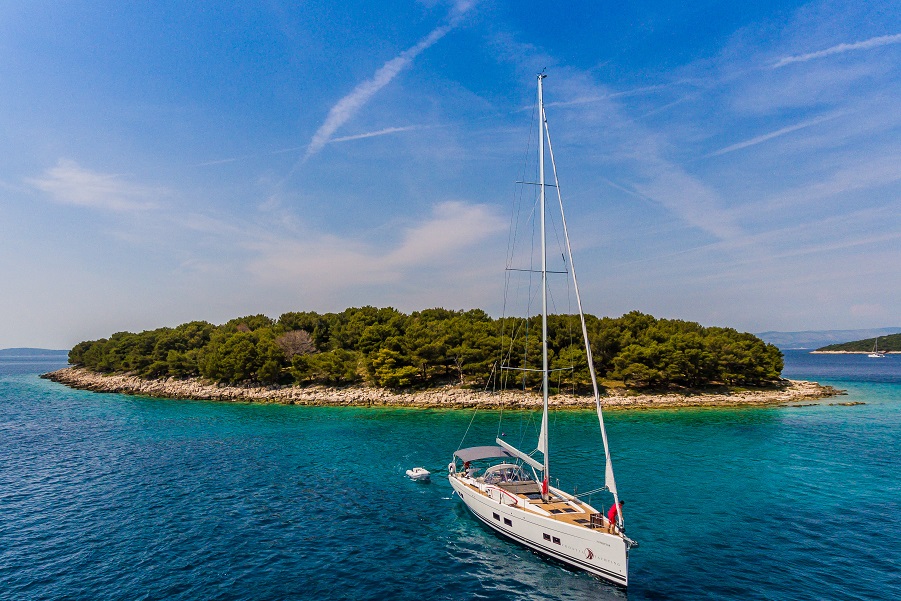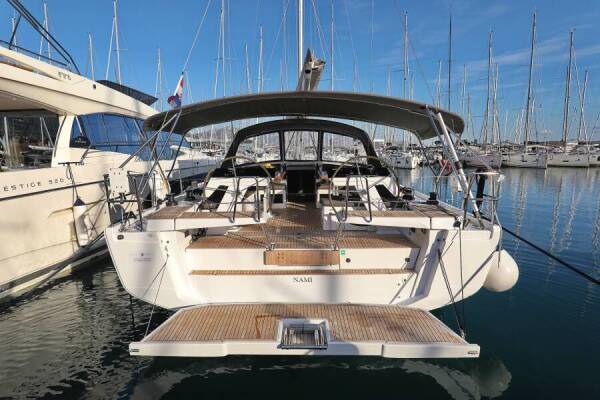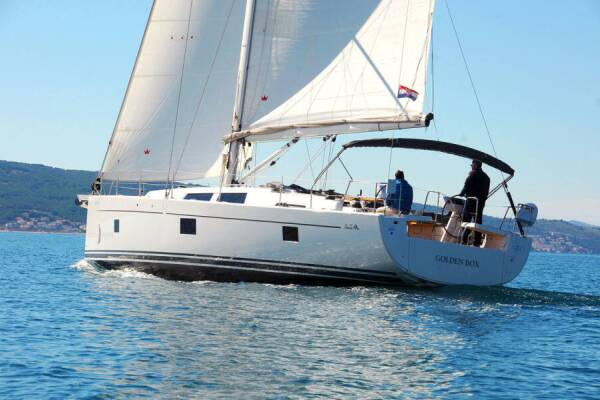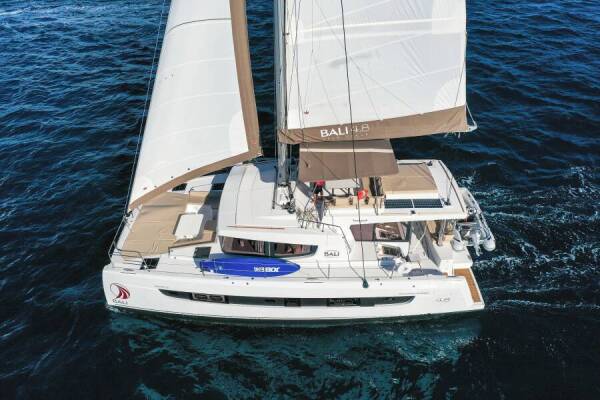A Travel Guide to discovering the Dalmatian Coast

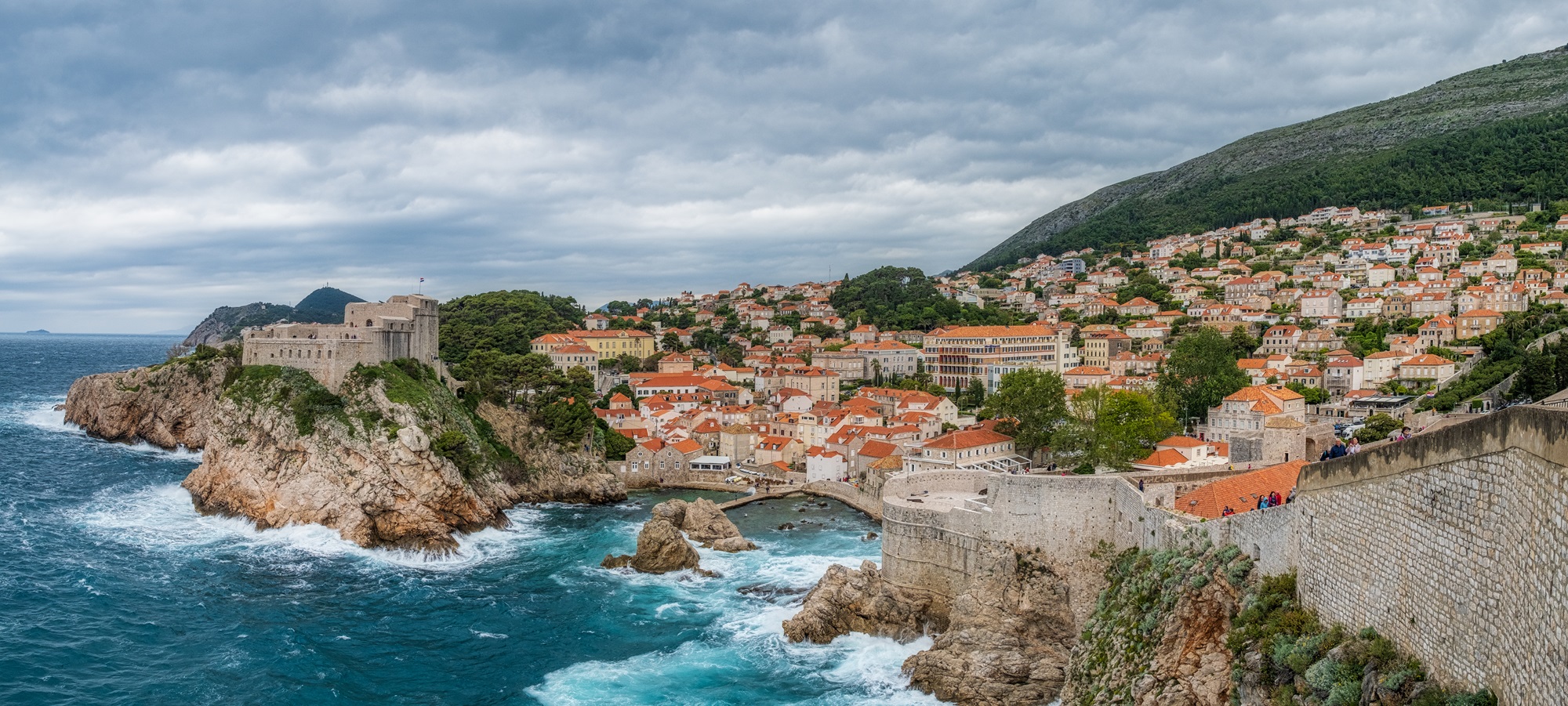 BLOG
BLOG
Where is the Dalmatian Coast?
The Dalmatian Coast is located in Croatia, extending along the eastern shore of the Adriatic Sea. It is the southernmost region of the country, starting from the northern town of Zadar and reaching down to the Bay of Kotor. This coastal stretch includes major cities such as Split, Šibenik, and Dubrovnik, as well as numerous islands scattered offshore.
Travelers have several convenient options to reach Dalmatia. The region is well-connected by international airports in Zadar, Split, Dubrovnik, and on the island of Brač, with flights from various European destinations. Buses frequently link coastal towns to major cities like Zagreb or Rijeka and international locations including Sarajevo and Mostar. Although train travel is limited within the region, rail connections to Zagreb exist. For those exploring the coastal towns and islands, numerous ferries and catamarans provide regular service, particularly during the summer months. Whether arriving by air, bus, train, or ferry, accessing the beauty of the Dalmatian Coast is both easy and versatile.
What are reasons to go to the dalmatian coast?
The Dalmatian coast beckons with lush olive groves, vineyards, and beautifull natural landscapes, including lakes and cascading waterfalls, making it a must-visit destination for travelers seeking a blend of natural beauty and cultural richness. What are the reasons to go to the Dalmatian coast? Here are a few compelling factors that make this region an enchanting choice for your next adventure:
- Rich History: The Dalmatian coast is steeped in history, with ancient Roman palaces, walled cities, and charming fishing villages dotting the coastline. Explore the Roman Forum in Split or wander through the narrow streets of the old town in Dubrovnik to immerse yourself in the region's fascinating past.
- Natural Beauty: From the Plitvice Lakes to the Krka National Park, the Dalmatian coast boasts breathtaking natural landscapes that are sure to capture your heart. Hike through pine forests, swim in crystal-clear lakes, or marvel at the cascading waterfalls for a truly immersive experience in nature.
- Sandy Beaches: The Dalmatian coast is home to some of the most beautiful beaches in the world, with white pebbles and turquoise waters stretching as far as the eye can see. Whether you prefer secluded coves or bustling beachfronts, you'll find your perfect spot to soak up the sun and relax by the Adriatic Sea.
Olive trees and grapes are not the only things we invite you to see. The beautiful beaches will amaze you as well, but there is also something else: the cozy corners of the Dalmatian land filled with beautiful olive patios, lakes, and seashores with the calm sound of the waves. You can be a fan of big cities, appreciate UNESCO heritage sites, or enjoy nature and peace – the Dalmatian Coast will not disappoint any of its visitors.
Go on a holiday to the Dalmatian coast and appreciate the unique combination of history, nature and beauty in a single destination.
What are the weather conditions on the Dalmatian Coast?
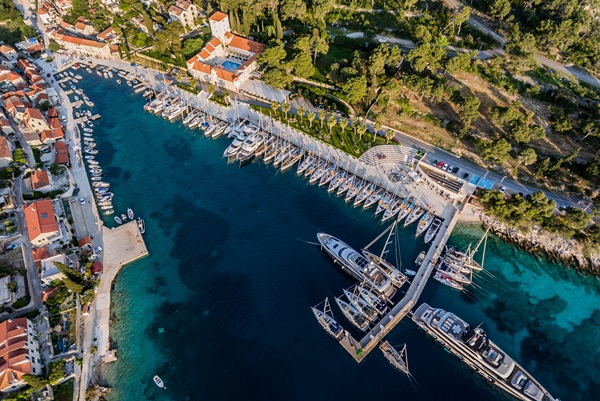
The weather on the Dalmatian Coast varies significantly throughout the year, making it a versatile destination for different types of travelers. In June, the region experiences warm and sunny weather, perfect for beach activities and sailing on the Adriatic Sea. July and August are the hottest months, with temperatures often exceeding 30°C (86°F), ideal for swimming and sunbathing, though these months also see the highest number of tourists. As in June, and September bring milder temperatures and fewer crowds, offering a more relaxed atmosphere for outdoor adventures.
In contrast, the winter months of January, November, and December are much cooler, with temperatures ranging from 5°C to 15°C (41°F to 59°F), and the region becomes significantly quieter, with fewer tourist services available. March signals the start of warmer weather, making it an ideal time for those looking to avoid the summer rush while still enjoying pleasant conditions for sailing and exploration.
Three regions of the Dalmatian Coast
The Dalmatian Coast is divided into three distinct regions: Northern Dalmatia, Central Dalmatia, and Southern Dalmatia. The Northern Dalmatia which includes the city of Zadar and is known for its beautiful national parks like Krka and Kornati. It offers a mix of historic sites and stunning natural landscapes. Central Dalmatia located around the city of Split, features iconic destinations such as Hvar and Brač islands. It's famed for its vibrant cultural scene, ancient ruins, and vibrant beaches. Southern Dalmatia dominated by the city of Dubrovnik, is famous for its well-preserved medieval architecture and breathtaking coastal views. It includes notable islands like Korčula and Mljet.
Coastal Towns in the Northern Dalmatia
Šibenik is known for its historic fortresses and the UNESCO-listed Cathedral of St. James. It offers a mix of medieval architecture and vibrant cultural life. Explore the old town, visit the St. Michael's Fortress for stunning views, and enjoy the various festivals and events. Šibenik has a lot of itinerary options as well.
Primošten is famous for its beautiful beaches and vineyards. It has a charming old town and stunning coastal views. Visit the Church of St. George and the statue of Saint Mary. This grand statue stands at 17 meters tall and is a tribute to the Virgin Mary, symbolizing protection over the town and presenting a beautiful view.
Biograd na Moru is a coastal town with a rich history, popular among sailing enthusiasts. Its marina is one of the largest in Croatia. The town offers beautiful beaches, a charming waterfront, and easy access to the nearby Kornati Islands National Park.
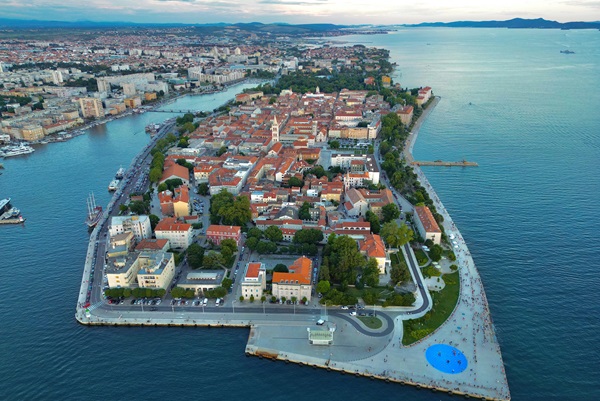
Zadar is well nown for its unique blend of ancient history and contemporary attractions. It features the Roman Forum, the medieval St. Donatus Church, and the Sea Organ, an architectural sound art object. The city's waterfront is perfect for leisurely strolls, and the nearby islands offer idyllic escapes. Also, the "Greeting to the Sun" is a famous architectural installation that consists of a large circular structure composed of 300 multi-layered glass plates, which collect solar energy during the day and create a mesmerizing light show at night. It is also a great starting point of your Dalmatian adventure.
Coastal Towns in Middle Dalmatia

Split is the second-largest city in Croatia. It offers a vibrant mix of ancient and modern attractions. The centerpiece is the Diocletian’s Palace, a remarkably preserved Roman monument now bustling with shops, cafes, and museums. The Riva promenade and the Cathedral of Saint Domnius are the main city symbols. The town offers a vibrant nightlife, delicious local cuisine and is very well connected to many destinations among the coastline.
Trogir is a small town with a big history that presents UNESCO World Heritage site with a well-preserved medieval core. Notable city sites include the Cathedral of St. Lawrence and the Kamerlengo Fortress.
Omiš is also a small town situated at the mouth of the Cetina River that offers a mix of adventure and history. The town is famous for its pirate history, medieval and outdoor activities like rafting, climbing, and zip-lining in the nearby Cetina Canyon.
Makarska, a town located along the scenic Makarska Riviera, is known for its beautiful beaches, exciting nightlife, and the Biokovo Mountain as a backdrop. Visit the Franciscan Monastery, relax on the pebble beaches, and explore the nearby nature park.
Coastal Towns in Southern Dalmatia

Dubrovnik, known as the Pearl of the Adriatic, is famed for its well-preserved UNESCO architecture. Its highlights include the Rector’s Palace, Sponza Palace, and the baroque St. Blaise Church. The cable car ride to Mount Srđ offers breathtaking views. Dubbrovnik also represents a great starting point for various itinerary options.
Cavtat, located on the south of Dubrovnik, offers a tranquil retreat with a palm-lined promenade, charming old town, and the Racic Mausoleum for stunning views of the Adriatic.
What Does the Dalmatian Coastline Offer?
Of all the places on the European coast, the Dalmatian Coast ranks as one of the most extraordinary and the most visited due to its clean nature, rich culture and history, and arts. This impressive coast located along the Adriatic Sea in Croatia features a plethora of beautiful blue waters, steeper cliffs, charming villages, and gorgeous islands, all of which have their own appeal.
One of the coast’s greatest attractions has to be old cities like Split, Zadar, or Dubrovnik. Each of these cities have richly preserved Roman, Venetian, and medieval styles, all echoing an era or an empire that has long since passed. The corners of the Croatian city of Split or the famous walls of which Dubrovnik is a prominent tourist center invite you into the romantic history of the Eastern Mediterranean region.

The Dalmatian Coast is perfect for island lovers. With more than 1,200 islands, Croatia has many opportunities for island hopping, exploring different beaches, secluded, hidden coves and traditional fishing villages. Other Mediterranean islands such as Hvar, Korčula and Brač have olive groves, vineyards and a busy night life while the smaller islands are great for those looking for peace and quiet.
Many water sports and activities are also in vogue in the Dalmatian Coast. The warm, Adriatic waters are perfect for swimming, snorkeling, diving and sailing. It’s hard to get bored at the coastline whether you decide to kayak or book a private boat to an abandoned bay.
More than stunning landscapes and historical cities in the Croatian coast are the Mediterranean traditions and food that can only be experienced in Dalmatian coast.
National Parks
The Dalmatian Coast is home to several beautiful national parks, each offering unique natural wonders. Krka National Park is renowned for its stunning waterfalls and lush greenery. Visitors can explore a series of cascades, including the famous Skradinski Buk, one of Croatia's most beautiful waterfalls. The park also features historic sites such as the Krka Monastery and the ancient Roman catacombs. Kornati National Park, an archipelago of 89 islands, is a paradise for sail enthusiasts. Its crystal-clear waters, diverse marine life, and secluded bays make it ideal for charter exploring. Mljet National Park, located on the island of Mljet, offers serene lakes, dense forests, and the historic Benedictine monastery on the island of St. Mary. This park is perfect for hiking, running and biking.
Beaches
The beaches along the Dalmatian Coast are among the most beautiful in the world. Zlatni Rat on the island of Brač is a unique beach known for its shifting shape due to tides and wind. Its white pebbles and turquoise waters make it a favorite for sunbathers and windsurfers. Dubovica Beach on Hvar Island offers a secluded bay with crystal-clear water and a charming old stone house backdrop. It's ideal for those seeking a tranquil escape. Sveti Jakov Beach in Dubrovnik provides stunning views of the old town and Lokrum Island. This pebble beach is less crowded than the city's main beaches, offering a peaceful retreat. Banje Beach, also in Dubrovnik, is famous for its proximity to the city walls and luxurious beach clubs. Visitors can enjoy both relaxation and vibrant nightlife here.
Dalmatian Mountains
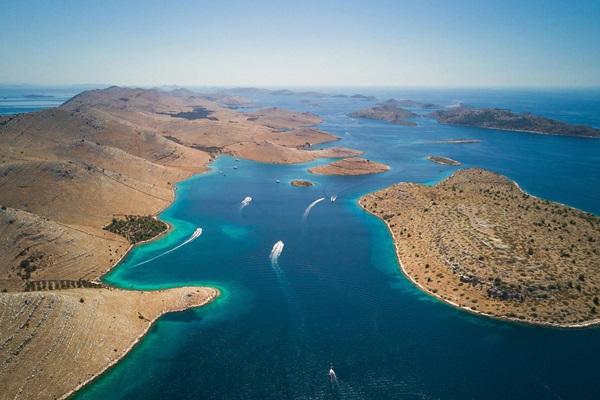
The Dalmatian Coast is well protected by impressive mountain ranges that offer breathtaking views and outdoor adventures. The Dinaric Alps stretch along the coast, with peaks such as Dinara, the highest mountain in Croatia, standing at 1,831 meters. These mountains provide excellent hiking opportunities, with trails leading through dense forests, alpine meadows, and rugged limestone landscapes. The Biokovo Mountain Range, located near the town of Makarska, is another highlight. Biokovo Nature Park features the Skywalk, a glass walkway that extends over a cliff, offering panoramic views of the Adriatic Sea and the islands. The park is a home to diverse flora and fauna, making it a great destination for nature enthusiasts. The Velebit Mountain Range is part of a UNESCO Biosphere Reserve and offers numerous hiking and climbing routes, including the challenging Premužić Trail. This region's diverse terrain includes beautiful landscapes, deep canyons, and rivers, making it a must-visit for adventure seekers. Pack your bags and get ready to explore the enchanting Dalmatian Coast.
Local culture and traditions of the Dalmatian Coast
The Dalmatian Coast welcomes its guests to indulge themselves in a myriad of traditions, tastes, and festivities that revive the local culture. In addition to the well-known historical sites and the delightful beaches, local traditions can be perceived in the many folk performances and seasonal celebrations of Slavic, Roman, and Mediterranean descent that have enriched the region.
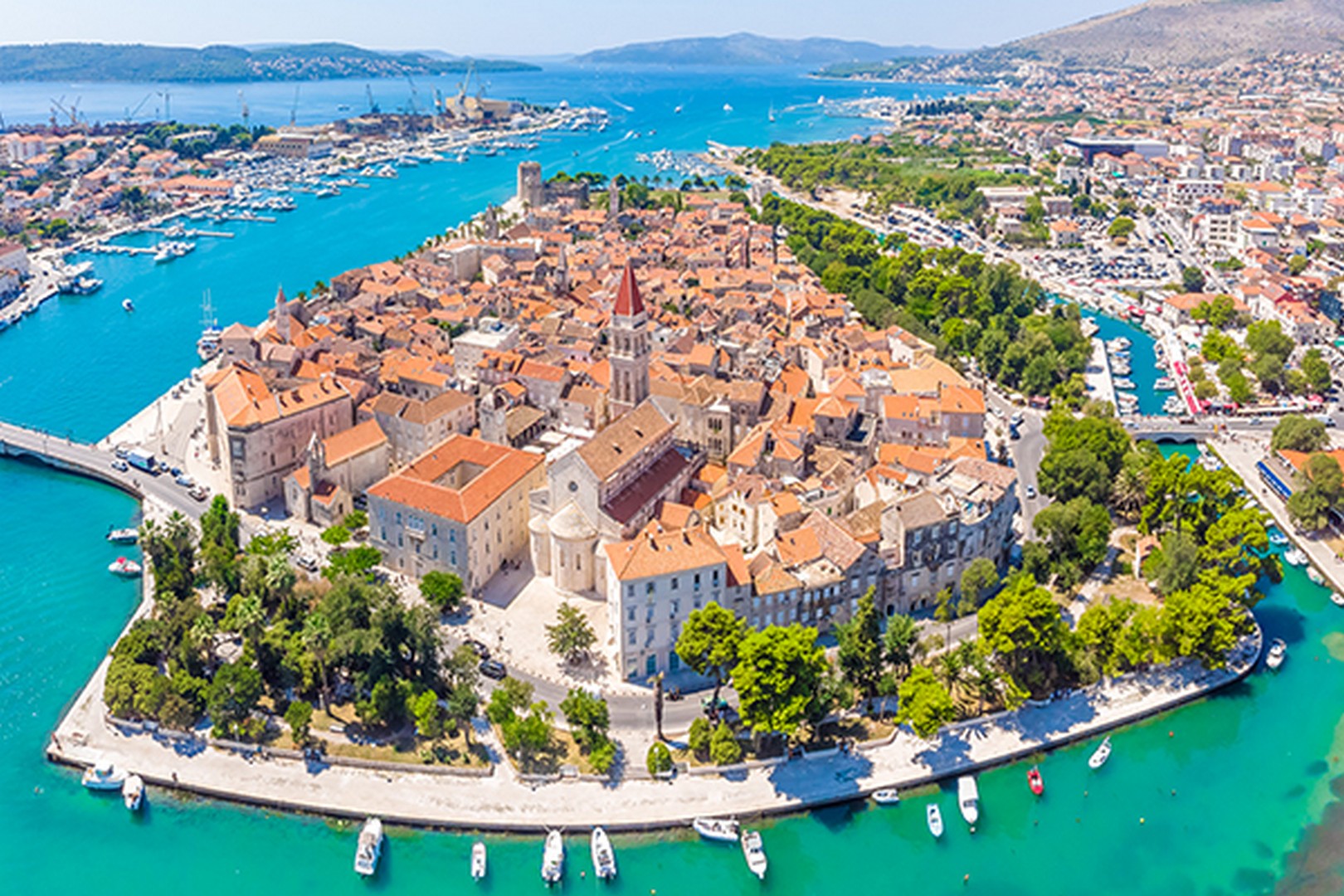
Coastal towns host Fishermen’s Nights as part of their summer festivals which focus on the locals and their customs, which in this region are centred on the sea. These summer events aim to bring together both locals and tourists so that everyone gets to try delicacies such as grilled fish and octopus caught by the local fishermen themselves along with local wines and the popular local liquor, rakija, and other shellfish. Klapas singing, dances, and games add to the fun and warmth and the visitors to the places can experience the Dalmatian hospitality and culture.
In Split, the “Days of Diocletian” festival attracts tourists offering them an opportunity to learn about the Roman history and culture of this coastal town whilst honoring Emperor Diocletian who retired in the city in the ancient times. During the festival, people dressed as Romans parade around the ancient Split streets with gladiator fights plays and enjoy performances depicting scenes of the Roman period. The old town shows a vibrant life of various markets, old gaming facilities, and craftsmen displaying skills and goods of the old times in the region.
One of the most iconic cultural expressions in Dalmatia is klapa music. Originating in the coastal villages, this form of a cappella singing is recognized by UNESCO as part of the world’s intangible cultural heritage. The harmonious songs are often performed in small groups, traditionally by men, and the lyrics capture themes of love, the sea, and local legends. Today, klapa performances are popular at gatherings, festivals, and open-air concerts, allowing visitors to experience this soulful music in its authentic setting.
Coastal towns host Fishermen’s Nights as part of their summer festivals which focus on the locals and their customs, which in this region are centred on the sea. These summer events aim to bring together both locals and tourists so that everyone gets to try delicacies such as grilled fish and octopus caught by the local fishermen themselves along with local wines and the popular local liquor, rakija, and other shellfish. Klapas singing, dances, and games add to the fun and warmth and the visitors to the places can experience the Dalmatian hospitality and culture.
In Split, the “Days of Diocletian” festival attracts tourists offering them an opportunity to learn about the Roman history and culture of this coastal town whilst honoring Emperor Diocletian who retired in the city in the ancient times. During the festival, people dressed as Romans parade around the ancient Split streets with gladiator fights plays and enjoy performances depicting scenes of the Roman period. The old town shows a vibrant life of various markets, old gaming facilities, and craftsmen displaying skills and goods of the old times in the region.
The Dalmatian Coast is also proud of its cusine that depends on seasonal festivals. Every autumn, the locals celebrate the harvesting of olive and grapes and villages hold events where they offer samples, host an agricultural feast and practice olive oil and wine-making. The local eating places called konobas serve authentic food like pašticada, which is a beef stew that has been cooked for a long period, and peka, which is a meat and vegetables cooked in a dome-shaped metal lid in hot ashes from the fire, which brings out the taste of the land.
The scenic vistas of the Dalmatian Coast are just the tip of the iceberg for those who wish to experience the local culture. It welcomes people to the arts and practices of the coastal society, which has been developing over the centuries of history, sea economy and local patriotism. From the festive events to the simplest recipes, the Dalmatian coast is an embodiment of the cultural diversity of Croatia.
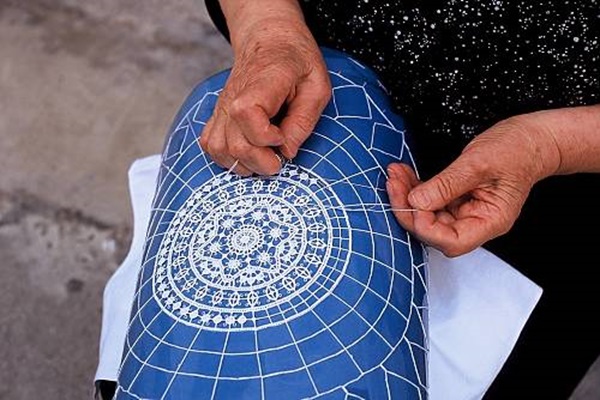
Lace making, particularly in the town of Pag, is another cherished craft. Pag lace, recognized by UNESCO as part of the world’s cultural heritage, and is created by skilled lacemakers using techniques passed down through generations. Visitors can watch these artisans at work and even purchase unique lace pieces as souvenirs.
Additionally, visitors can explore the old hinterland villages where traditional crafts, such as stone masonry and lace making, are still practiced. In the village of Primošten, stone masonry is an age-old craft, with artisans creating everything from intricate carvings to practical household items. This tradition goes to the region's historical reliance on limestone, used extensively in building and art.
Local cuisine on the Dalmatian Coast
The Dalmatian Coast, located along the Adriatic Sea in Croatia, is renowned for its rich and diverse culinary heritage and sweet delights. This region's cuisine is characterized by its use of fresh, locally sourced ingredients, reflecting the Mediterranean influence and the availability of high-quality seafood, meats, and produce.
The bustling local markets, like the Pazar in Split or the green market in Zadar, provide a glimpse into daily life, offering fresh produce, local cheeses, and homemade olive oil. These markets are a sensory delight, with the aromas of fresh herbs, spices, and baked goods filling the air. Vendors proudly display their specialties, which often include Dalmatian pršut (dry-cured ham), Paški sir (Pag cheese), and a variety of homemade liqueurs.
Dalmatian wine making is another part of the local culture, with a history that dates back to ancient times. The region’s warm climate and fertile soil produce excellent conditions for vineyards. Wine enthusiasts can visit local wineries, such as those in the Pelješac Peninsula and the island of Hvar, to sample indigenous varieties like Plavac Mali and Pošip. Many of these wineries offer tours that include walks through the vineyards, explanations of the wine-making process, and tastings paired with local delicacies.
Bread making in traditional mills is a lesser known but fascinating aspect of Dalmatian heritage. In the hinterland, old water mills are still operational, where grain is milled using age-old techniques. These mills produce flour that is then used to bake traditional bread, such as peka, which is cooked under a bell-like dome covered in hot coals. Visitors can witness this process and even take part in bread-making workshops, learning how to knead dough and bake it to perfection.
Adventurous activities on the Dalmatian Coast
On the Dalmatian Coast, besides enjoying the rich culinary offerings, there are numerous adventurous activities to try, each offering a unique way to experience the stunning natural beauty of the region.

Rafting on the Cetina River is one of the most exhilarating activities available. This river flows through breathtaking canyons and lush landscapes, providing an unforgettable adventure. The rafting route includes thrilling rapids, scenic waterfalls, and tranquil sections, making it suitable for both beginners and experienced rafters. The Cetina River's crystal-clear waters and stunning surroundings create an ideal setting for an adrenaline filled day out.
For those interested in exploring the underwater world, scuba diving in Kornati National Park is a must. This park, located in the central part of the Croatian Adriatic, contains over 80 islands and reefs. Divers can explore underwater caves, vibrant coral reefs, and historic shipwrecks.
Paragliding enthusiasts will find Biokovo Mountain to be an ideal location. The mountain offers spectacular views of the Adriatic Sea and the surrounding islands. Launching from Biokovo provides an incredible aerial perspective of the Dalmatian Coast, with its dramatic cliffs, forests, and sparkling waters. The thermals and wind conditions here are generally favorable for paragliding, making it a popular spot for both beginners and seasoned pilots.
Whether you're navigating the rapids of the Cetina River, exploring the underwater wonders of Kornati National Park, or flying above Biokovo Mountain, each adventure promises unforgettable memories and a deeper appreciation of this stunning region.
Local tips for a good time
To enhance your experience and ensure a smooth journey, here are some tips from the locals.
- Always appreciated when visitors make an effort to speak a few words of Croatian. Learning basic phrases such as "hvala" (thank you), "molim" (please), and "dobar dan" (good day) can go a long way in building rapport with locals. You can find more useful phrases on this blog about Basic Croatian Phrases for Communication.
- Be mindful of local customs and etiquette. For example, Croatians are generally punctual, so it's polite to be on time for any arranged activities or meetings.
- When dining, it's customary to greet others with a handshake and to say "dobar tek" (enjoy your meal) before starting to eat.
- Tipping in restaurants is appreciated but not mandatory; a 10% tip is considered generous.
- Croatians are known for their hospitality, so don't be surprised if you're invited for a coffee or even a meal. Accepting such invitations can lead to memorable experiences and deeper connections with the local culture.
By following these tips and immersing yourself in the local customs, you can ensure a memorable and enriching experience on the Dalmatian Coast.











